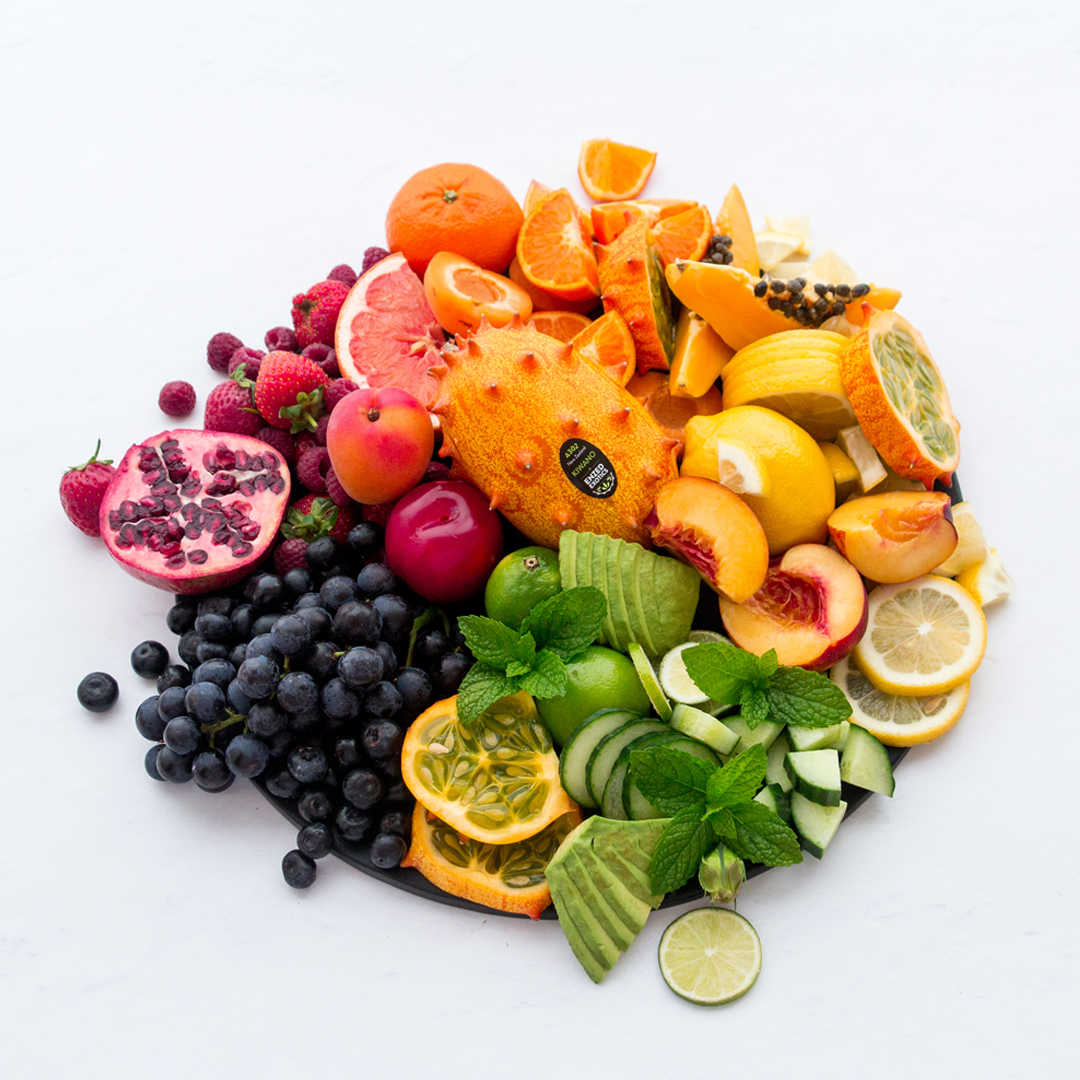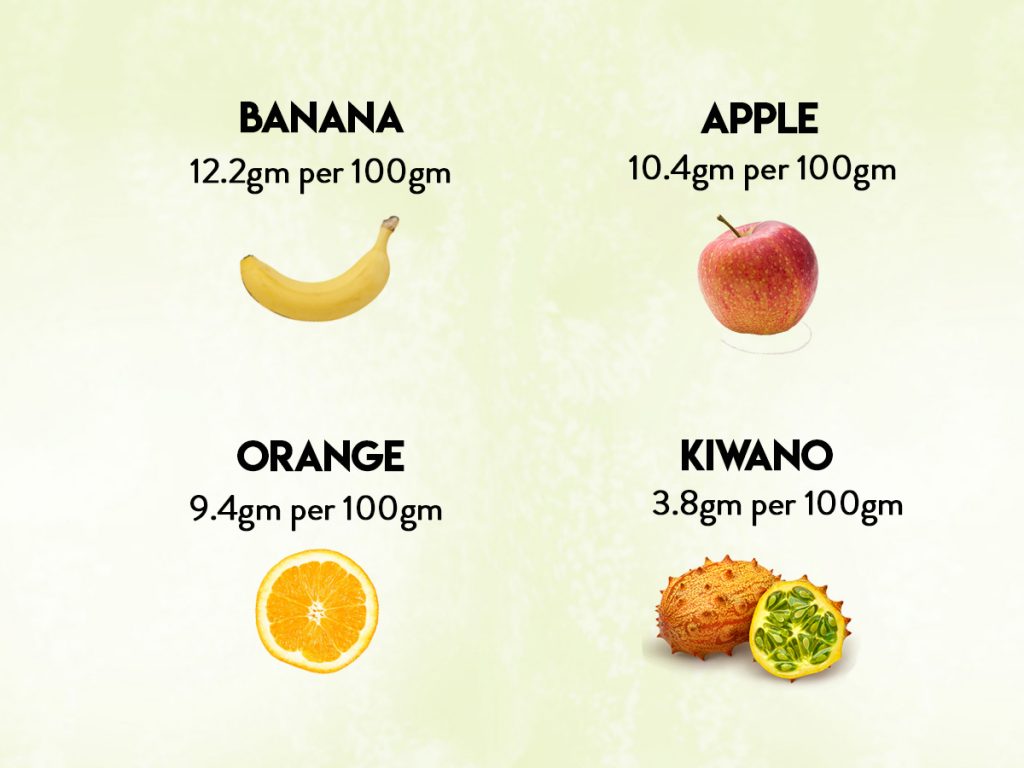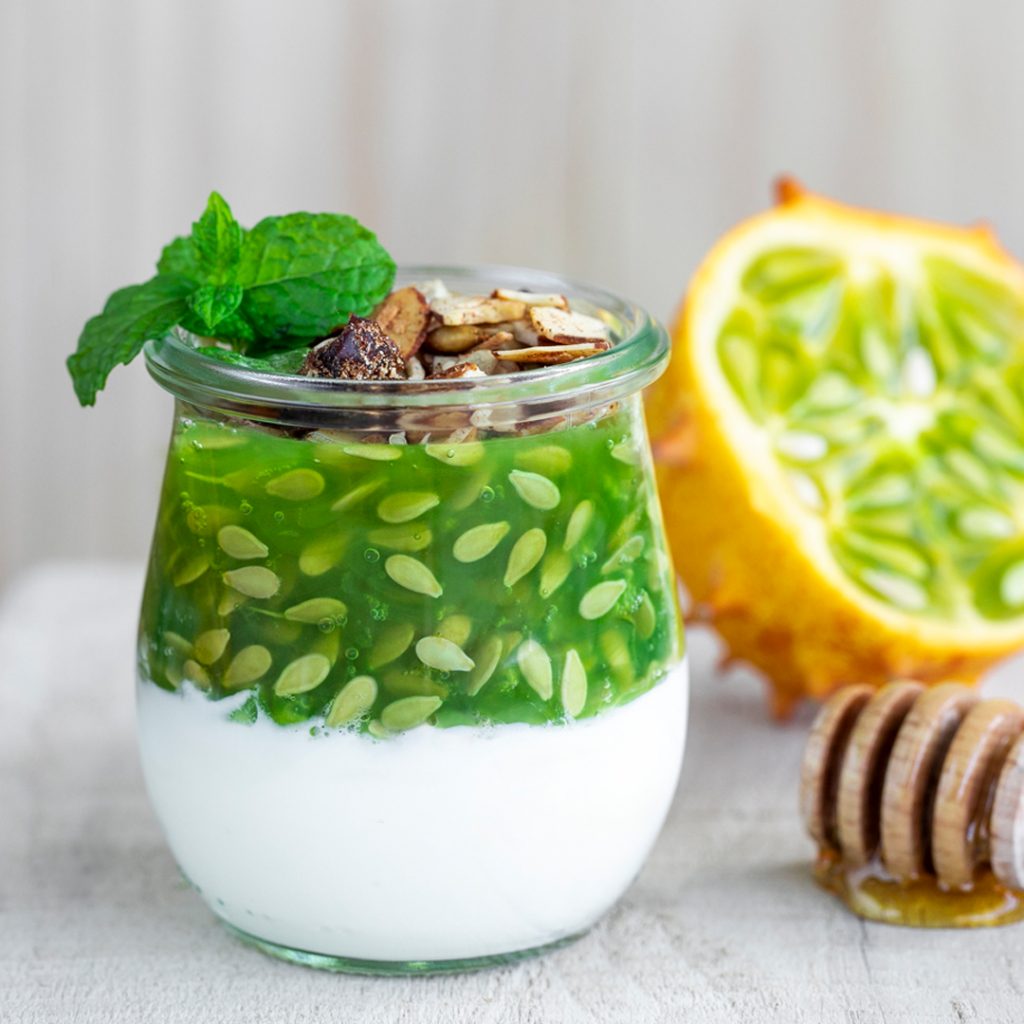
It won’t come as a surprise that we’re big fans of fruit around here. But in recent times, fruit has come in for a bit of bad press.
And that’s mainly because of the ‘s’ word. Sugar. While it’s true that fruit – yes, even the sour ones – contain naturally occurring sugars, they also have an incredibly wide variety of nourishing (and crucial) minerals and vitamins. Which can’t be said of a Snickers Bar.
Eating fruit has benefits for our digestive systems, skin, immunity, weight control, heart health, the growth and repair of our bodies and so much more. It’s 100% of this earth, comes in its own natural packaging… and did we mention that it tastes pretty darn amazing? (Note: There are certain medical conditions that call for diets excluding fruit or certain fruits – always seek your doctor’s advice).
A healthier way to eat fruit
If you are not on a special diet and simply watching carb, sugar or energy intake, there is a healthier way to eat fruit. Number one is to choose low sugar fruits. The amount of natural sugars in fruit varies considerably – for example, Kiwano contains 3.8gms per 100gm of fruit, while an apple contains 10gm per 100gm. Some fruits like banana also change their sugar composition as they ripen.

10 of the best low sugar fruits
Below is a list of 10 low sugar fruits based on tips from Healthline – but adding to the mix our own favourite low sugar fruit, Kiwano. Our list goes an extra step by including how much natural sugars is found in a normal serve, and the amount per 100gm, to give a fair comparison. Plus we’ve added in a little tip about what else makes that fruit so nutritious. All figures are from the USDA Database. So let’s dig in!
1.Lime
1 lime (67gm) contains 1.1gm or 1.7gm per 100gm. Limes are high in vitamin C, providing over 20% of your daily needs.
2. Lemon
1 Lemon (58gm) contains 1.5gm or 2.5gm per 100gm. Lemons are also rich in vitamin C and contain pectin, a fiber which may help lower blood sugar levels.
3. Kiwano
½ Kiwano (110gm) has 4.2gm or 3.8gm per 100gm. Kiwano is also a good source of magnesium (a vital mineral which among many functions helps to calm the nervous system, ease muscle tension and beat fatigue), potassium and dietary fiber. It’s also high in water and low calorie. Find out more about the Kiwano’s top 5 health benefits.
4. Raspberries
Raspberries are much lower in naturally occurring sugars than blueberries. 1 cup (123gm) of raspberries has 5gm or 4.4gm per 100gm, vs 15gm per 100gm for blueberries. This little red powerhouse is also a good source of vitamin C, dietary fiber and potassium.
5. Strawberries
1 cup of whole strawberries (144gm) has 7gm or 4.9gm naturally occurring sugars per 100gm. According to UK nutritionist Jo Lewin, Strawberries are an excellent source of vitamins C and K as well as providing a good dose of fiber, folic acid, magnesium and potassium.
6. Watermelon
1 cup of diced watermelon (152gm) has 9gm or 6gm per 100gm. Watermelon contains the antioxidant lycopene (as found in tomatoes) which may have benefits for heart health.
7. Grapefruit
½ fruit (123gm) has 8gm naturally occurring sugars or 7gm per 100gm. Grapefruit is something of an old-school weight loss aid – but now there’s science to back that claim. Grapefruit is also a good source of dietary fiber which helps us to feel fuller for longer.
8. Rockmelon (Cantaloupe)
1 cup diced (156gm) has 12gm naturally occurring sugars or 8gm per 100gm. Rockmelon has a high water content (90%), is high in Vitamin C and (like it’s melon friend Kiwano) is low calorie.
9. Kiwifruit
1 fruit (69gm) has 6gm naturally occurring sugars or 9gm per 100gm. Kiwifruit is high in vitamin C – according to leading New Zealand brand Zespri, one Kiwifruit a day can provide you with your entire daily requirement.
10. Orange
1 orange (131gm) has 12gm sugar or 9gm per 100gm. Oranges are the OG source of vitamin C – which has more benefits than just warding off winter colds. Vitamin C is needed to form blood vessels, cartilage, muscle and collagen in bones and is vital to the body’s healing process.
Fruit and Protein
For an even healthier way to enjoy fruit, Kiwi nutritionist Mikki Williden suggests combining it with protein or fat – thus reducing the exaggerated blood sugar response that can occur in some people. Options could be eating it with cheese, nuts or peanut butter (for example, a smear of peanut butter on a piece of apple or Kiwano with thick Greek yogurt).

But don’t stop there….
This “top 10” list is just a guide – we’re definitely not advocating fretting over every gram of natural sugar! Or excluding other fruits – after all there are different nutrients and benefits to found in each.
Here in New Zealand we’re heading into that oh-so-delicious prime summer fruit season – Kiwano, blueberries, strawberries, cherries, apricots, nectarines, peaches, watermelons and more.
What fruit do you look forward to every summer? Let us know in the comments below!



